A 365-Day Project
"We Are All Mozart"
A project to create
new works and change
the perception of the
music of our time.

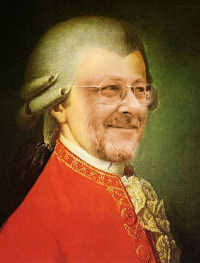
 May 14, 2008
May 14, 2008 
It's hard to say how books come about. They're a combination of ideas, organization, and madness coupled with some sort of public. Who can say. I've written several -- though in some cases "written" is a euphemism. You can still find some in used book shops.
The first was a novel. Sort of a novel. It began as a novel at least, its hopeful beginning left it in my typewriter at home in New Jersey. David Gunn -- yes, I knew him back then -- would appear and disappear in Trenton randomly from his home in Riverton. One day (cue happy skipping music) he found that nascent novel in the typewriter and finished the first chapter. Irreverently. The adventures of one spacefarer Treflin Karmora turned into an improbable parody of bad sci-fi novels, with characters popping into the plot and being unceremoniously deleted. A typescript survived. The typescript was typeset on a TRS-80 and output on an Addressograph during a round-trip from Vermont to Michigan. Some copies were made, but within a few years the photo paper had faded, and it was re-designed and output from MSWord after transfer to a Windows PC. The novel was published in a run of 333 copies in 1996, and placed online about the same time. Yes, you can read The Karmora Papers.
The second book was a work for hire, as it's known. The family of the author who died in 1918 commissioned Kenneth Sawyer Goodman: A Chronology and Annotated Bibiography, published by the Newberry Library. Having been a friend of the familly with library experience, I was offered this remarkable opportunity: leafing through diaries and personal papers, manuscripts (including a set that were headed for the incinerator the very day I arrived on site at the National Trust Bank in Chicago, where the papers were stored), organizing paintings and photos. The part-time work took several years beginning in 1977. Its eventual hardbound publication in 1983 ... misspelled my name.
The third book was a revised and expanded collection of articles, The Custom TRS-80 ... and Other Mysteries. At the height of the first personal computer era (when we still called them microcomputers), I had become a go-to guy for hardware and software modifications. My little newsletter called "Updates" -- sent in trade for any postcard that didn't have pictures of cats on it -- fell into the hands of a publisher. The publisher hired me and within a few years I was writing features and columns for such fallen-by-the-way rags as Byte, Kilobaud Microcomputing, 80 Microcomputing, Programmer, The Color Computer Magazine, even going so far as to publish my own magazine, UnderColor. The former International Jewelers' Guild refashioned itself as IJG, a computer book publisher, and asked me to create a hands-on volume to be part of their new "Other Mysteries" series. The tale of its creation included an English editor who changed every 'color' to 'colour' and 'while' to 'whilst' and lost the photos, but eventually it appeared in 1981. By the time the publisher went bankrupt in a sleight-of-hand legal move that snagged most of my royalties, the book had sold more than 50,000 copies in three printings. I invested the royalties in my new company called Green Mountain Micro... and it went bankrupt. Qué sera and all that.
The fourth book was another computer volume about a microprocessor: Learning the 6809. The 6809 was going to be the future of personal computing -- an 8/16-bit hybrid chip from Motorola that followed the famous Mostek 6502 of the KIM-1 and Apple ][ days. It was in the perfect position to bridge the economic and design gap between the 8-bitters and up-and-coming 16-bit chips like the 68000. Motorola's demo unit quickly became the Tandy Color Computer -- which, sadly, looked like a toy and died a long a wretched death. The machine and its processor sold well, but never had the impact it might have in the hands of a more design-centric company (Tandy? Design? Hah!). But that was later. In 1983, a learning text was perfect -- guided self-learning, with audio cassettes (my sultry -- or is that sulky? -- voice) in a big binder. It was well-received, and copies on CD-ROM are still available.
The fifth book was actually the first, a collection of essays, poetry, stories and images from members of the Trans/Media arts cooperative mentioned in yesterday's commentary. Like The Karmora Papers, it also followed my move from New Jersey to Vermont. Handmade books are a wonderful experience; I'm still a paper person, and can't wrap my enthusiasm around e-books as my primary 'interface' with the extended printed word. The book was conceptualized in 1977 to use different technologies -- copies of hand drawings and writing, typesetting (on an IBM Selectric Composer), reproduced on acid-free ivory with a Xerox photocopier, and with its divider pages set in steel cold type on a bed press; the obverse was uniquely numbered. Fifteen copies of the book were bound by hand with a Trevor Bryant painting on cloth-backed paper, surrounded by a sheet of birchbark being exfoliated by nearby trees, and covered in Acrylite with the silk-screened title jkl; (the right hand of the typewriter home row). It was finished in 1987 and sent to the contributing artists; one remaining copy is for sale at Frog Peak Music.
The sixth book was actually a set, and another limited edition. Called A Random Selection from the Marvin Hodge Archive, it was created from the detritus of Hodge's paper material -- postcards, papers, essays, telegrams, envelopes -- and told the story of a peculiar artist with altogether too much time on his hands. Ten copies were created of the three-volume set.
The seventh book never saw paper print, appearing only online. The Middle-Aged Hiker was a collaboration with David Gunn, collecting journals, essays and photographs into a surprisingly coherent Grand Canyon experience. David began solo hiking the Canyon in the mid-1980s, and I joined him a few years later. Shortly afterward, Stevie and I began hiking, and David and his friend Susan hiked different trails. In all, fifteen hikes into the depths of the Canyon were recorded and their stories told.
Which brings me at last to Country Stores of Vermont: A History and Guide. It has been more than ten years since my last book; in the interim, I edited several (with entrancing titles such as Marching On! John Brown and the Struggle Against Slavery by Robert Willis Allen; CPFR Pilot Studies for the Voluntary Interindustry Commerce Standards Committee; My Little Life: A Girl Growing Up in the Forties by Jane Bryant; Teaching Composition on the Web: A Teacher Handbook by Fern Tavalin; Makoro Solutions Enhancements by the IBM Corporation; and Category Management Systems: The Power of Information in Retailing by Jerry Singh). I was concentrating on composition instead of prose and, in those days, on Kalvos & Damian's New Music Bazaar.
In 2001 -- after some get-off-your-ass-you'll-like-this encouragement from Stevie -- I was hired by the Vermont Alliance of Independent Country Stores as Executive Director, a glorified position of flack, web designer, imagineer and referee. It has been a successful gig for them, with considerable good publicity. The website caught lots of traffic, and people started following the tours that I had improvised.
Which is how The History Press found me. Smack in the middle of WAAM, a call came in from their editor on October 5th. Would I submit a proposal for a country stores book, part history, part guidebook? Certainly I would; could it be published by the September 2008 Country Store Month? Yes, with a tight schedule. How tight? Get the proposal in to us by November 7th and we'll talk. Ouch. Mid-WAAM. But then, although I'd written hundreds of magazine articles for gen-u-wine national magazines, it looked like The History Press would be my first 'real' book publisher -- that is, one with background, experience and focus on the topics, an actual house style, editors, graphics designers, and a marketing department. Yes!
Tomorrow: Writing a book in three months flat.
* * *
Here are some images from the old book jkl; that finally appeared in 1987. Each artist has a copy, one was stolen and an empty box delivered (en route via the Postal Service), and two went to Frog Peak Music. One was sold, one remains.
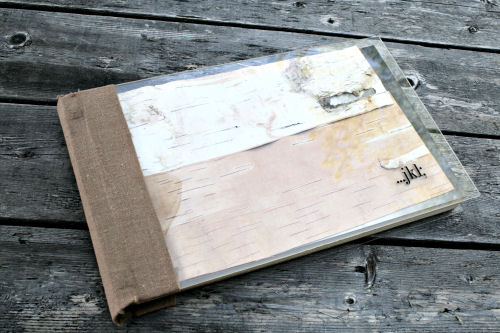
jkl; • Copy No. 1 on the picnic table, with buckram binding and Acrylite covers.
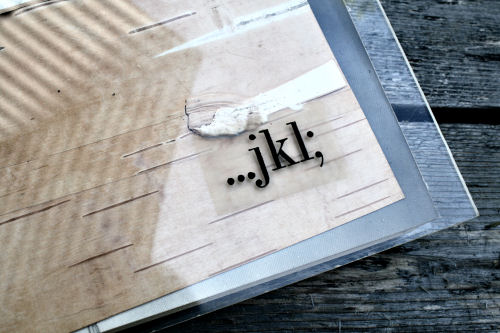
jkl; • Closeup of the title, silkscreened; it's taken from the typewriter home row.
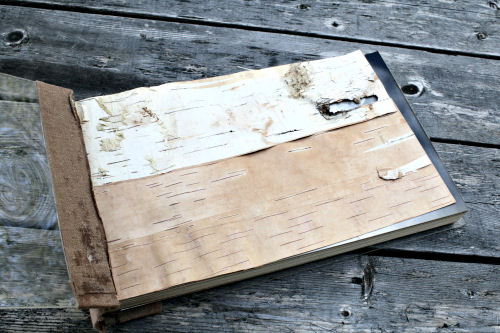
jkl; • Birchbark was natural strips exfoliated by trees, and shrank over the years.
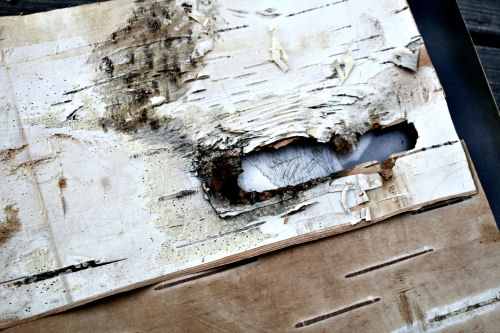
jkl; • Birchbark under the covers still flakes off, and is different for each book.
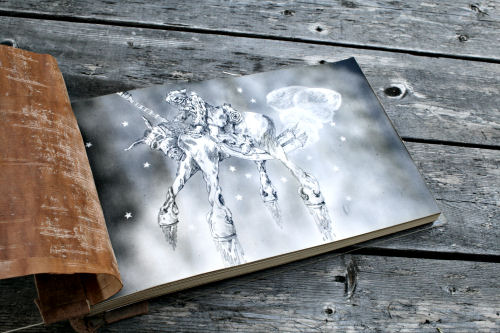
jkl; • Trevor Bryant's cover photo is screened on cloth-backed photo paper.
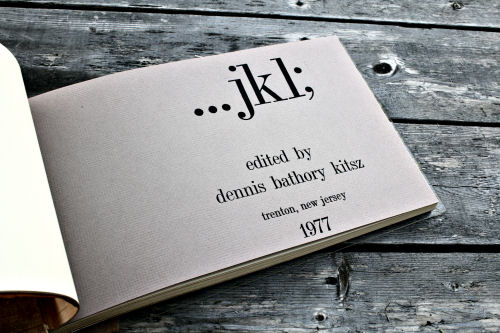
jkl; • Title and divider pages were set in steel type on heavy textured grey stock.
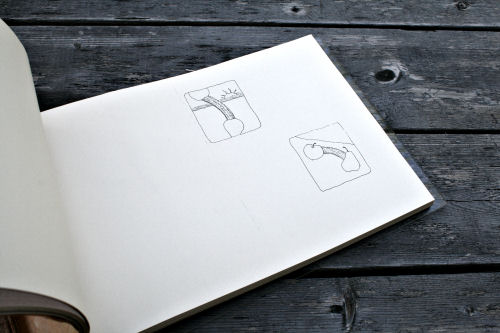
jkl; • JoAnn Giordano's illustrations shown on pages that were photocopied on acid-free paper.
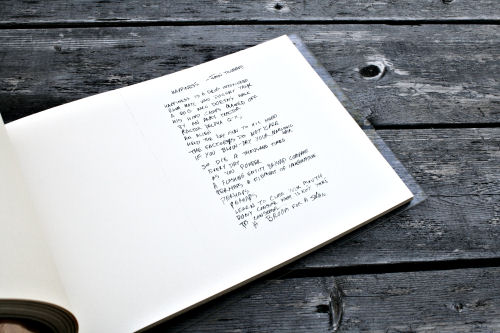
jkl; • John Van Zelm Trubee's hand-scrawled anti-poems were copied directly.
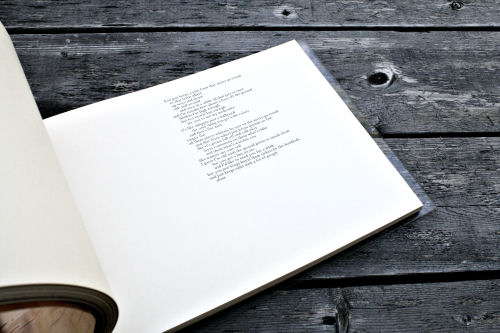
jkl; • David Gunn's poetry typeset on an IBM Selectric Composer.
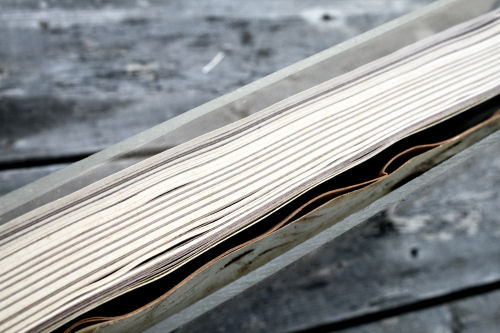
jkl; • Edgewise are seen plastic covers, birchbark, cloth title, grey dividers, and ivory paper.